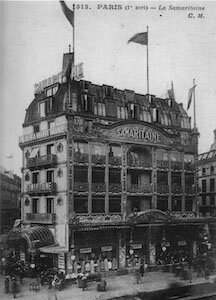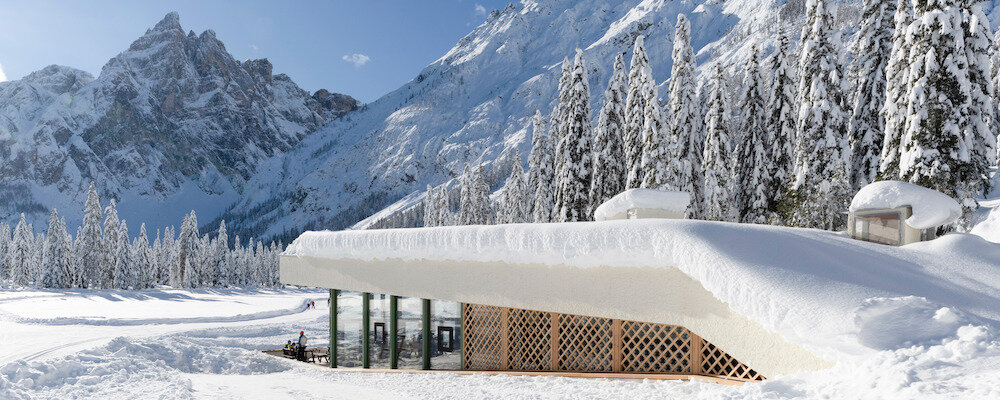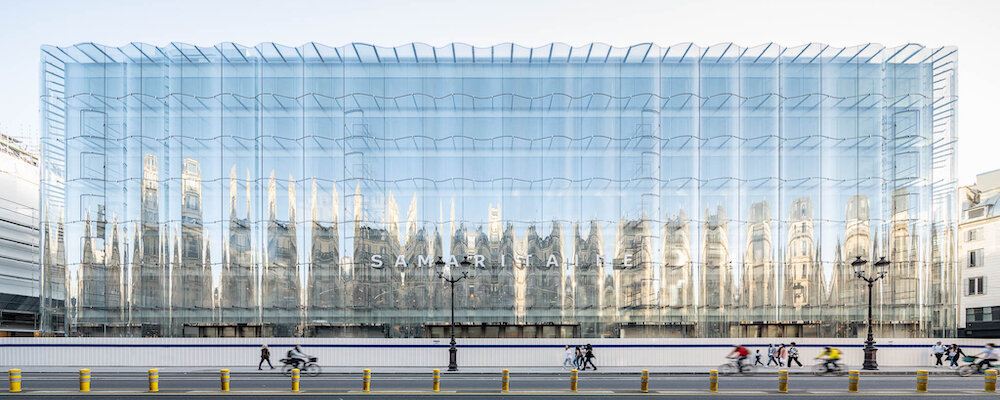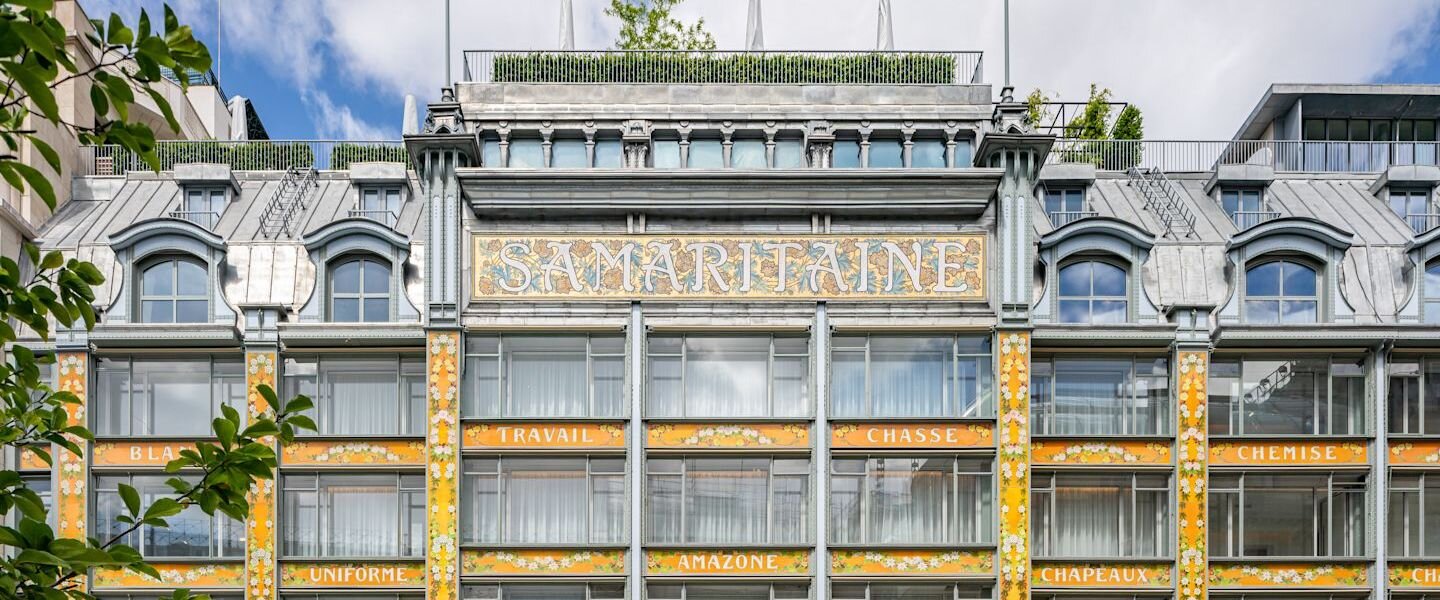The Renaissance Of La Samaritaine – Part 1 - History Of A Parisian Icon
Founded in 1870, inaugurated in 1910, closed in 2005 and finally re-opened last week, the legendary Samaritaine aims to restore its unique identity as a place for flâneries, a popular but exquisite store for everyone.
This typical Parisian department store concentrates 150 years of history. It is attached to the French retail history as well as the Paris one as ‘populaire’, a place where everyone could find anything.
In 1870, a salesman named Ernest Cognacq, with his wife Marie-Louise Jaÿ, opened a store on this spot. As it grew, the architect Frantz Jourdain persuaded them to erect a new building that would bring ‘art into the street’.
They inaugurated his light-filled, iron-framed art nouveau building in 1910, followed by Henri Sauvage’s art déco extension in 1928.
But by the 1970s, La Samaritaine’s (also nicknamed Samar) sales were in decline.
Les Halles close by became the new retail heart of Paris, the Samaritaine struggled to retain its customers and eventually fell into disrepair.
In 2001, the luxury goods group LVMH acquired the store’s four timeworn buildings (along with an adjoining apartment block, which it agreed to renovate and sell back to the city as social housing).
Four years after, in 2005, La Samaritaine was forced to close for security reasons for dilapidated structural elements (glass pavers).
After 16 years of work and multiple challenges, La Samaritaine project has finally reopened its door on June 23rd, 2021 thanks to a deep transformation by Sanaa architecture agency. A hotel, included in the plan, will be unveiled in September 2021.
The USD 750 million project, financed by LVMH, raised a lot of constraints and controversy. On the one hand, the gigantic restoration (up to 1,800 people working on the building site during the peak period) of the four buildings classified as Historic Monuments and the integration into the social housing programme imposed by the authorities, have brought the emblematic department store into a new era with an international outlook.
The Art Nouveau building
The original Art Nouveau building (on the right) was meticulously restored by an army of French artisans from all over the country.
Outside, the sunflower-yellow panels were removed, cleaned and partially re-created with the original stone made of lava from the Volvic extinguished volcano in the centre of France.
Inside, the fresco of peacocks is a magnificent painted canvas of 425sqm, considered as a masterpiece of Art Nouveau. It has been dusted off and shines in the sunlight brought in by the glass roof (finished in 1907).
In 2021, the glass has been replaced by electrochromic which tints according to the brightness.
The seven floors are light and airy with large windows to enjoy the views of the rooftops and buildings like the magnificent Church of Saint-Germain-L'Auxerrois.
The metallic framework and stunning staircase are both signed by Gustave Eiffel.
The ornaments were originally painted in grey.
The mythical original oak staircase, Samaritaine’s iconic symbol, counts 16,000 gold leaves on its railing.
Accentuating that feeling are nods to the Paris streets, like an abstract flooring pattern of cobblestones and a playful take on the city's iconic street lamps which bend like bouquets of flowers, so the experience feels like a continuation of a walk though the streets.
From Art Nouveau to today, the "Samar" dear to Parisians and tourists from all over the world has evolved with the times.
The New Samaritaine
Strangely enough, La Samaritaine reduced its initial retail space by more than half, i.e. 20,000 m2, to integrate 600 brands chosen by DFS (world leader in the sale of luxury products intended for travellers), 96 social housing units, a daycare nursery, a five-star ‘Le Cheval Blanc’ hotel, and offices. 4,400 jobs were created with the re-opening of the store.
Each level of La Samaritaine is now devoted to a carefully curated shopping category.
There are some islands of discovery too such as an art gallery by Emmanuel Perrotin and 12 unique food vendors scattered throughout, and the top floor is completely devoted to food, with a lounge, bar and formal restaurant.
The floors – 6,000 sq m of terrazzo handlaid with marble insets – are the work of the New York-based Karen Pearse.
French designer Hubert de Malherbe created the basement level, now home to the biggest beauty department in Europe, covering the entire 3,400 sqm footprint of the store.
He used ‘Point de Hongrie’ parquet as alleys. Patterned mosaic tiles delineate different spaces.
Finally, if you are part of the happy few listed on the Samaritaine personal shoppers' little black book, you will gain access to their private apartment with design creations by Chloé Nègre, Karine Chahin, and Virginie de Graveron.
When it comes to contemporary art, the Factory—named in homage to Andy Warhol’s Factory — gives carte blanche to emerging French talents in the world of urban art. For the re-opening works by Antonin Hako, Antwan Orfee and Pablo Tomek are visible on large concrete walls stretching from ground level up to the second floor (rue de Rivoli building).
Pictures: Jared Chulski, Matthieu Salvaing.
==> Part 2 - The Renaissance Of La Samaritaine – A New Era, here


































